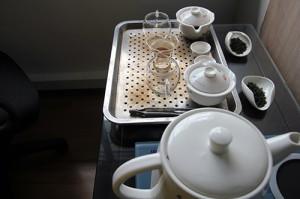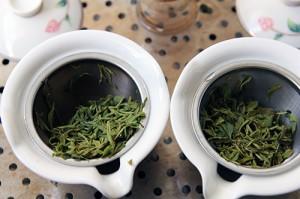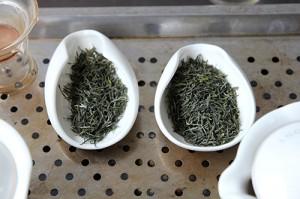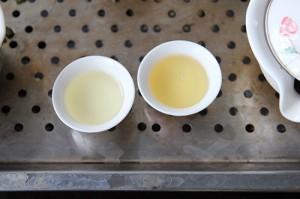In earlier posts, I have often made the point that parameters- i.e. quantity of tea leaves, water temperature and infusion time- is not the end-all-be-all of brewing tea. It was written with the perspective that slavish adherence to any set of parameters would not guarantee a ‘perfect cup’ as technique goes further than that.
However, it may give rise to the impression that these are unimportant. That is untrue. While the ability to read and react to the tea and adjust the measurements according is paramount, having a set of parameters in place is always useful.
Why Parameters are Important
Firstly, it serves as a point of reference. If I am trying a tea for the first time, I may not quite have an idea what “it is supposed to taste like”. This is especially so if I am sampling one of the numerous new or ‘resurrected’ varieties that emerge each year.

Secondly, if I only have a small sample of the tea, I may not want to blow my only serving worth by experimenting. If the instructions are given, I would probably follow it- although admittedly not all the time- otherwise I would stick to a ‘general guideline’.
Thirdly, it happens- not all the time but admittedly it does occurs- that I am unable or reluctant to rely on my senses and instincts. It could be in the bustle of brewing tea at a roadshow, or while I am working (though tea need not suck in the office), I can rely on the crutch of the parameters.
It may not yield a home run but at least there is a base hit. As I constantly reiterate- less than perfect tea still beats out most of the alternatives. If I am not in an environment or situation that allows me to eke the most out of the tea, I would still take >80% over crummy tea or a machine made tea.
Fourthly, not everyone likes guesswork. Part of the allure of tea is in the art of making it- finding the balance between having sufficient heat to unleash the aroma yet not too much to release the bitterness causing catechins, or the optimal infusion time to allow enough depth to be released yet not too much astringency.
Not everyone likes that- especially at the start.
Everyone probably would have encountered this conversation in some or fashion in their tea journey:
Q: How much tea leaves to add?
A: Depends on personal preference. If you like it strong, put more. If not, put less.

The over-infused tea (right) looks duller and less vibrant
Q: How long to steep?
A: Depends on how strong you like?
Q: What temperature should the water be?
A: There’s no right or wrong, depends on what you like.
As even the best algebra student can tell you, there is no way of solving an equation with 3 variables.
My answer to parameter related questions is always to point them to a basic set, for reference. But with the caveat that:
i) It is geared towards a ‘lighter’ flavor since experienced drinkers who prefer a stronger taste would never ask about the parameters anyway
ii) It is just a point of reference to experiment
Experimenting with Variables
As I conduct a series of experiments to illustrate the importance of parameters namely the quantity, the steeping time and the water temperature, I had a ‘control’- i.e. I brewed tea with the set parameters alongside the other tea with one variable being changed.

Experiment I- Varying the Temperature
100⁰C was used instead of 80⁰C
Tea brewed with boiling water had more pronounced astringency and less of the briskness that is favored in good green tea. The chestnut fragrance is gone and the tea is flatter.
Experiment II- Increasing the Steeping Time
5 minutes instead of 2 minutes
The impact was not major but the over-steeped tea was more bitter with slightly more pronounced astringency.
Experiment III- Increasing the Quantity of Tea Leaves

Not hard to guess which was made with 5g and which with 10g
10g of tea leaves were added instead of 5g
The ‘variant’ tea was extremely bitter and had a more pronounced astringency.
For green tea at least, the greatest impact is with increasing the quantity of tea leaves, followed by temperature and the infusion time.
As my ex-boss likes to say “you have given me the problem, what about the solution?”
That is what awaits you in the next post.
See more articles related to brewing tea
